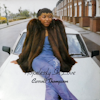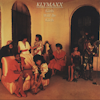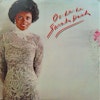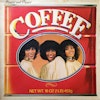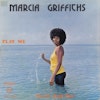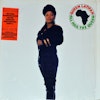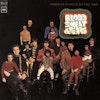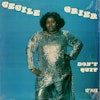That Teena Marie has authored several of the most enduring classics of modern funk is undeniable. Her limber voice in counterpoint with her tight rhythm arrangements forms an immediately recognizable sound. And her searingly emotional vocals have earned her ballads a special place in the memories of more than one generation. But her lasting legacy may be her clear-eyed yet unfailingly optimistic view of racial relations. A White woman (she claimed Portuguese, Irish, Italian, and American Indian heritage) who was passionately committed to Black culture, she stood as a bold repudiator of racial stereotypes. It was a stance that did not always win her praise. “Nigger lover this, nigger lover that… I’ve been called it all,” she wrote in the liner notes to her 1981 album, It Must Be Magic.
Mary Christine Brockert was born in 1956 in Santa Monica, California, and grew up in Venice near the impoverished Black neighborhood of Oakwood. She showed a talent for dancing and singing from a young age, and appeared on the Beverly Hillbillies as a tap-dancing youngster in 1964. It was through television that she first made her connection with Motown.
By the time Teena graduated from Venice High School, the Detroit label had shifted its base of operations to Los Angeles and was attempting to branch out into film and TV. When Teena auditioned for a prospective series, the diminutive actress caught the eye of Berry Gordy, who signed her in 1976. Though she was paired with several producers, nothing clicked, and for several years her career languished. During this time, she lived with Gordy’s brother Fuller, Fuller’s wife, and their two daughters, and often spent time at the Motown offices. When a chance meeting with Rick James took place, the long-hoped-for producer-artist chemistry finally occurred.
James had been slated to produce Diana Ross’s upcoming record, but he lost interest when Ross decided she only wanted him to work on a song or two. He took some of the material he had intended for the ex-Supreme and brought it to Marie, notably her first single, the rowdy “I’m Just a Sucker for Your Love.” Curiously, her debut album, Wild and Peaceful, did not feature a single image of Marie. Much has been made of this obfuscation, a tactic more commonly applied in its reverse, when Black artists did not appear on albums marketed to White audiences. “Mr. Gordy used the same concept with me,” Teena once explained. “He said that is was so soulful that he wanted to give the music an opportunity to stand on its own merit… By the time my second album came out people were like, Lady T is white?”
Lady T solidified her standing as a new R&B diva with a glamorous cover shot and a solid collection of self-penned songs headlined by the devastating funk of “Behind the Groove.” The album was coproduced with Richard Rudolph and dedicated to his wife, Minnie Riperton. Though Teena was no longer working on her recordings with Rick James, she was still intimately involved with him as an on-and-off lover, a situation complicated by their professional careers and James’s admittedly “freak”-ish proclivities. Nowhere was their combustible chemistry more on display than “Fire and Desire,” a duet from Rick’s Street Songs.
Irons in the Fire was released by Motown six months later and was Marie’s most elaborate project to date, with production and songwriting handled entirely by herself. The sophisticated funk of “I Need Your Lovin’” was the breakout single. It Must Be Magic and the sizzling “Square Biz” followed, featuring a rap that sits with Blondie’s “Rapture” as one of the first by a mainstream female artist.
By 1982, her career at Motown was stalled, and she accused the label of refusing to release her material. The resulting lawsuit, decided in her favor, became a landmark decision in the music business, as the ruling (known as the “Brockert Initiative”) made it illegal for an unsupportive label to hold an artist captive.
She moved to Epic for the remainder of the ’80s, scoring her biggest hit, “Lovergirl,” and continuing to broaden her musical palette. In recent years, Marie released two successful records with the legacy branch of Cash Money and one record for Stax.
Lady T unexpectedly passed on December 26, 2010.



